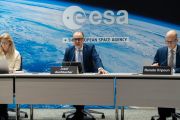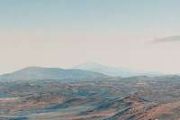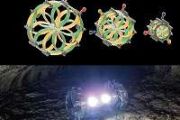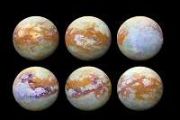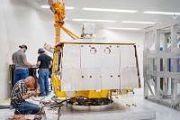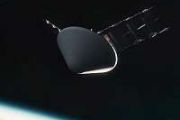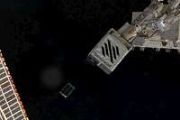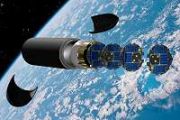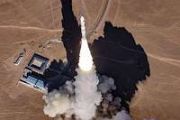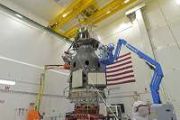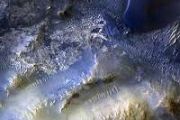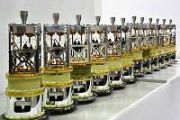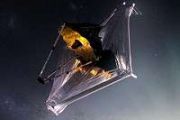
Copernical Team
NASA's Curiosity views first 'sun rays' on Mars

Martian sunsets are uniquely moody, but NASA's Curiosity rover captured one last month that stands out. As the sun descended over the horizon on Feb. 2, rays of light illuminated a bank of clouds. These "sun rays" are also known as crepuscular rays, from the Latin word for "twilight.
HydroGNSS twice as good
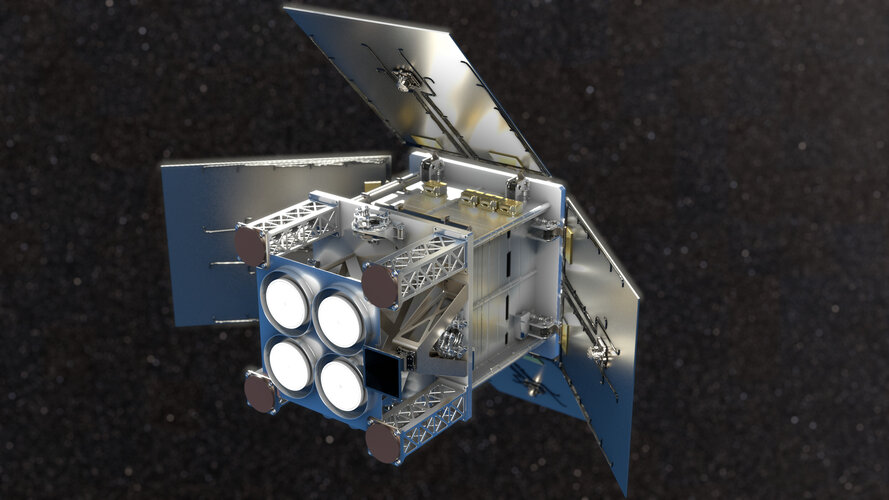
ESA’s HydroGNSS mission will now comprise two identical satellites to halve the time it takes to revisit the same place on Earth’s surface and re-measure various climate variables such soil moisture. Having two satellites in orbit will significantly improve the science that this exciting new Scout mission will yield.
AI draws most accurate map of star birthplaces in the Galaxy
 Stars are formed by molecular gas and dust coalescing in space. These molecular gases are so dilute and cold that they are invisible to the human eye, but they do emit faint radio waves that can be observed by radio telescopes.
Observing from Earth, a lot of matter lies ahead and behind these molecular clouds and these overlapping features make it difficult to determine their distance and
Stars are formed by molecular gas and dust coalescing in space. These molecular gases are so dilute and cold that they are invisible to the human eye, but they do emit faint radio waves that can be observed by radio telescopes.
Observing from Earth, a lot of matter lies ahead and behind these molecular clouds and these overlapping features make it difficult to determine their distance and NASA seeks commercial near space network services
 The Near Space Network provides missions within 2 million kilometers (1.2 million miles) of Earth with robust communications and navigation services. Using a blend of government and commercial assets, the network supports science, human spaceflight, and technology demonstration missions exploring our planet, the Moon, and beyond.
In February 2023, NASA issued the Near Space Network Service
The Near Space Network provides missions within 2 million kilometers (1.2 million miles) of Earth with robust communications and navigation services. Using a blend of government and commercial assets, the network supports science, human spaceflight, and technology demonstration missions exploring our planet, the Moon, and beyond.
In February 2023, NASA issued the Near Space Network Service China plans robotic spacecraft to collect samples from asteroid
 The Chinese government has approved a plan to send a robotic spacecraft to collect samples from an asteroid, according to the China National Space Administration's Lunar Exploration and Space Program Center.
The mission, called Tianwen 2, is designed to launch a probe to obtain samples from the 2016 HO3, the smallest and closest "quasi-satellite" to Earth, and bring them back. After accomp
The Chinese government has approved a plan to send a robotic spacecraft to collect samples from an asteroid, according to the China National Space Administration's Lunar Exploration and Space Program Center.
The mission, called Tianwen 2, is designed to launch a probe to obtain samples from the 2016 HO3, the smallest and closest "quasi-satellite" to Earth, and bring them back. After accomp Major collaboration reveals new insights on binary star systems
 Scientists have long been intrigued by X-ray binary star systems, where two stars orbit around each other with one of the two stars being either a black hole or a neutron star. Both black holes and neutron stars are created in supernova explosions and are very dense - giving them a massive gravitational pull. This makes them capable of capturing the outer layers of the normal star that orbits ar
Scientists have long been intrigued by X-ray binary star systems, where two stars orbit around each other with one of the two stars being either a black hole or a neutron star. Both black holes and neutron stars are created in supernova explosions and are very dense - giving them a massive gravitational pull. This makes them capable of capturing the outer layers of the normal star that orbits ar Dark matter halos: the key to understanding galaxies
 We have come a long way in understanding the universe around us, thanks to current technological advances, such as the construction of huge telescopes or satellites with increasingly powerful instruments. However, it is disturbing that most of the universe components (matter and energy) are still unknown to us. In the "recipe" to "build" a universe like ours, we have to put two ingredients that
We have come a long way in understanding the universe around us, thanks to current technological advances, such as the construction of huge telescopes or satellites with increasingly powerful instruments. However, it is disturbing that most of the universe components (matter and energy) are still unknown to us. In the "recipe" to "build" a universe like ours, we have to put two ingredients that The outburst of a neutron star reveals the nature of phenomena only observed in black holes
 X-ray binaries are systems formed by a compact object, a neutron star or a black hole, and a star of a similar size to the Sun. The compact object swallows matter from the companion star through a disk that emits large amounts of light, especially in X-rays. This process in which the compact object attracts matter, known as accretion, usually occurs in violent eruptions during which the system b
X-ray binaries are systems formed by a compact object, a neutron star or a black hole, and a star of a similar size to the Sun. The compact object swallows matter from the companion star through a disk that emits large amounts of light, especially in X-rays. This process in which the compact object attracts matter, known as accretion, usually occurs in violent eruptions during which the system b Humanity's quest to discover the origins of life in the universe
 "We are living in an extraordinary moment in history," says Didier Queloz, who directs ETH Zurich's Centre for Origin and Prevalence of Life and the Leverhulme Centre for Life in the Universe at Cambridge. While still a doctoral student Queloz was the first to discover an exoplanet - a planet orbiting a solar-type star outside of Earth's solar system. A discovery for which he would later receive
"We are living in an extraordinary moment in history," says Didier Queloz, who directs ETH Zurich's Centre for Origin and Prevalence of Life and the Leverhulme Centre for Life in the Universe at Cambridge. While still a doctoral student Queloz was the first to discover an exoplanet - a planet orbiting a solar-type star outside of Earth's solar system. A discovery for which he would later receive Ozone-measuring Instrument on NOAA-21 Satellite Captures its First Images
 On February 9, 2023, an ozone-measuring instrument on the recently launched NOAA-21 satellite opened its doors and, over the course of a week, gathered data for its first global image. The Ozone Mapping and Profiler Suite (OMPS) consists of three sensors that monitor Earth's ozone layer and track its recovery.
The map above, created using OMPS data, shows total ozone concentrations in the
On February 9, 2023, an ozone-measuring instrument on the recently launched NOAA-21 satellite opened its doors and, over the course of a week, gathered data for its first global image. The Ozone Mapping and Profiler Suite (OMPS) consists of three sensors that monitor Earth's ozone layer and track its recovery.
The map above, created using OMPS data, shows total ozone concentrations in the 
